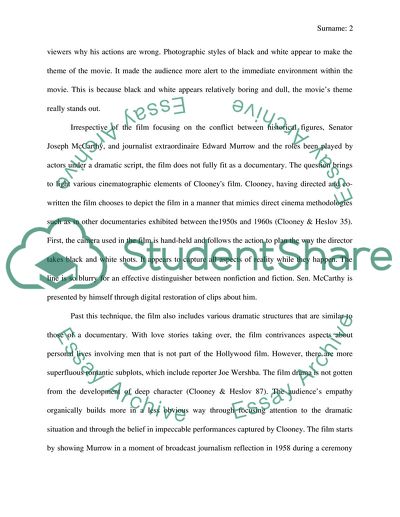Cite this document
(The News Team by Murrow and the Outcome of the Social Settings Essay Example | Topics and Well Written Essays - 1750 words, n.d.)
The News Team by Murrow and the Outcome of the Social Settings Essay Example | Topics and Well Written Essays - 1750 words. https://studentshare.org/visual-arts-film-studies/1646659-the-news-team-by-murrow-and-the-outcome-of-the-social-settings
The News Team by Murrow and the Outcome of the Social Settings Essay Example | Topics and Well Written Essays - 1750 words. https://studentshare.org/visual-arts-film-studies/1646659-the-news-team-by-murrow-and-the-outcome-of-the-social-settings
(The News Team by Murrow and the Outcome of the Social Settings Essay Example | Topics and Well Written Essays - 1750 Words)
The News Team by Murrow and the Outcome of the Social Settings Essay Example | Topics and Well Written Essays - 1750 Words. https://studentshare.org/visual-arts-film-studies/1646659-the-news-team-by-murrow-and-the-outcome-of-the-social-settings.
The News Team by Murrow and the Outcome of the Social Settings Essay Example | Topics and Well Written Essays - 1750 Words. https://studentshare.org/visual-arts-film-studies/1646659-the-news-team-by-murrow-and-the-outcome-of-the-social-settings.
“The News Team by Murrow and the Outcome of the Social Settings Essay Example | Topics and Well Written Essays - 1750 Words”. https://studentshare.org/visual-arts-film-studies/1646659-the-news-team-by-murrow-and-the-outcome-of-the-social-settings.


